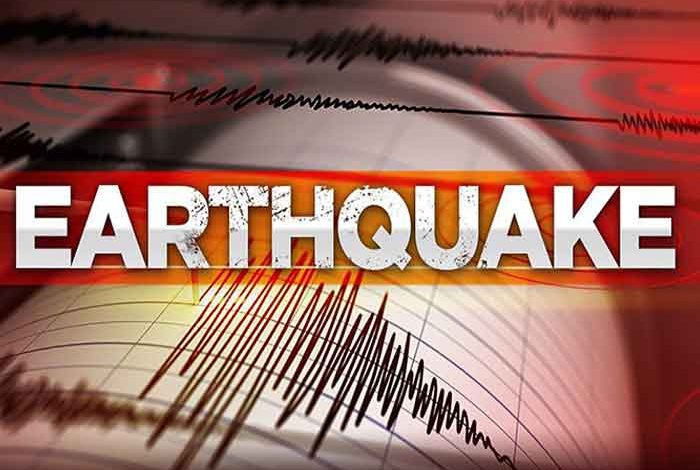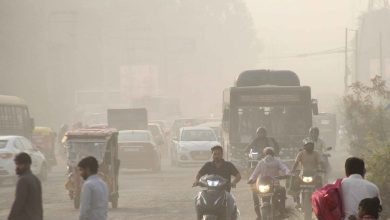Earthquake Jolts Nagpur District Again

Geologists Nagpur: Nagpur district finds itself once again amidst seismic turmoil as back-to-back earthquakes, both measuring M 2.6 on the Richter scale, struck on a Saturday afternoon. These tremors mark the latest in a series of seismic events that have unsettled the region, prompting concern among both citizens and experts.
Unraveling the Recent Earthquakes
Swarm Earthquakes: An Overview
Over the past four days, Nagpur district has experienced a total of four swarm earthquakes. These recurring tremors have not only stirred panic among the populace but have also set alarm bells ringing among geologists and other experts. The National Center for Seismology, Ministry of Earth Sciences, Government of India, reported the first tremor at Nishanghat area around 3.07 pm, followed by another at Mendhepathar area at 4.17 pm in Umred taluka of Nagpur district.
Previous Incidents
This recent seismic activity follows a similar pattern observed earlier in March. On March 26, Nagpur district encountered two earthquakes of M 2.8 magnitude each, coinciding with a tremor of the same magnitude in Akola district. Meanwhile, Hingoli district, located 262 kms away from Nagpur, experienced three earthquakes on March 22, including one of M 4.5 magnitude felt in Umerkhed taluka of Yavatmal district. Notably, the depth of Saturday’s tremors remained under 5 km, unlike previous incidents which occurred at depths exceeding 10 km.
Expert Insights and Analysis (Geologists Nagpur)
Theories Surrounding the Seismic Activity
Geologists and experts have put forth various theories to explain the recent surge in seismic events. Some attribute these occurrences to the self-reactivation of a deep-seated fault plane, while others point to blast-induced seismicity. The transfer of the earthquake division from the India Meteorological Department (IMD) to the Geological Survey of India (GSI) also adds complexity to the analysis, considering major earthquakes in the past occurred under the IMD’s jurisdiction.
Insights from a Senior Meteorologist (Geologists Nagpur)
Speaking to The Hitavada, a senior meteorologist shed light on the nature of these tremors. Drawing parallels with past earthquakes in Latur, Bhuj, and Jabalpur, the meteorologist categorized the recent events as blast-induced seismicity. Citing the proximity of coal mines to the affected areas, the expert highlighted the role of human activities, particularly coal extraction through blasts, in triggering these earthquakes.
Proposed Measures and Conclusion
Moving Forward
Despite differing interpretations, experts unanimously advocate for further investigation through micro earthquake (MEQ) recording and macro seismic ground surveys in the epicenter localities. These measures aim to provide a clearer understanding of the underlying causes of the seismic activity and inform future mitigation strategies.
The recent spate of earthquakes in Nagpur district underscores the complex interplay between natural and anthropogenic factors in seismic events. As communities grapple with the aftermath, collaboration between stakeholders and ongoing research remain crucial in building resilience against such incidents.
FAQs (Frequently Asked Questions)
- What is swarm seismicity, and how does it differ from single earthquakes? Swarm seismicity refers to a series of earthquakes occurring closely in time and space, often indicating stress release along fault lines. Unlike single earthquakes, swarm events involve multiple tremors within a short timeframe.
- Can blast-induced seismicity pose a significant threat to communities? Yes, blast-induced seismicity, often associated with activities like mining and construction, can pose risks such as structural damage and landslides, particularly in regions prone to seismic activity.
- How do geologists differentiate between natural and human-induced earthquakes? Geologists employ various techniques, including seismic monitoring and geological surveys, to analyze the characteristics and triggers of earthquakes. Factors such as depth, location, and geological context help distinguish between natural and human-induced seismic events.
- What measures can communities take to mitigate the impact of earthquakes? Community preparedness, including awareness campaigns, emergency drills, and adherence to building codes, plays a vital role in mitigating the impact of earthquakes. Additionally, investing in infrastructure resilience and early warning systems can enhance response efforts.
- Are there long-term implications of frequent seismic activity in a region? Yes, frequent seismic activity can have long-term implications, including soil liquefaction, ground subsidence, and changes in groundwater levels. Understanding these effects is crucial for sustainable development and disaster preparedness.










